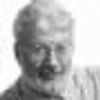Although the U.S. is only democratic country without guaranteed paid vacations, most Americans manage to find some time during the summer to relax at the beach, at a state park, or in the back yard. Many folks want to spend their vacations just chilling rather than thinking about the problems at work, at home, and in the world. But if you're interested in figuring out the roots of our current economic, social and political crisis, what it will take to fix it, and how you can be part of the solution, here's a list of 15 recent books you might want to take with you.
- Joshua Freeman, American Empire: The Rise of a Global Power, the Democratic Revolution at Home 1945-2000 (2012). Historian Freeman explains how America became the world's most powerful military and economic nation after World War 2, and how America's conservative and corporate leaders used anti-Communism to thwart the expansion of the New Deal. Freeman also shows how the combination of the labor and civil rights movements helped guarantee that post-war prosperity was widely (if unevenly) shared. The Vietnam war was a turning point in many ways, as the U.S. began losing its grip on global domination. Starting in the 1970s, corporate America fought back intensively to regain its political influence at home and to challenge the progressive consumer, labor, environmental, women's rights, and civil rights movements that were democratizing society. The result has been a widening economic divide. The book explores the grand sweep but does so by telling fascinating stories about people and events.
- Jacob Hacker and Paul Pierson, Winner-Take-All Politics: How Washington Made the Rich Richer -- and Turned Its Back on the Middle Class (2011). If you want to learn how the very rich and corporate American used its political influence to create a new Gilded Age of enormous wealth and income disparities, this is the book for you. In the past 30 years, the top 1 percent have enjoyed 36 percent of all the income growth generated in the U.S. economy. The current gap between the 1 percent and the rest of America isn't the result of market forces. It is the result of government policies geared toward the upper, upper class. The authors show how the country's biggest corporations reorganized their political operations -- coordinating their campaign donations, lobbying, creation of think tanks, policy organizations, and front groups -- to be more effective at influencing government policy at all levels. And they show how radical conservatives have replaced moderates in leading the Republican Party, dragging the party more and more to the right. The Supreme Court's Citizens United ruling has only exacerbated the forces Hacker and Pierson document.
- Sam Pizzigati,The Rich Don't Always Win: The Forgotten Triumph over Plutocracy that Created the American Middle Class, 1900-1970 (2013). Pizzigati covers some of the same ground as Hacker and Pierson. After World War Two, strong unions, Keynesian stimulus programs (for road construction and home building, among others), and graduated tax rates expanded the middle class and narrowed the gap between the rich and the rest. Pizzigati argues that we need a new wave of policies that promote prosperity for all rather than for the fortunate few. For practical steps on translating those ideas into policy, read Chuck Collins's 99 to 1: How Wealth Inequality Is Wrecking the World and What We Can Do about It.
- Thomas Mann and Norman Ornstein, It's Even Worse Than It Looks: How the American Constitutional System Collided With the New Politics of Extremism (2012). These middle-of-the-road think tank experts don't explore the widening economic divide but instead look at the widening political divide between Democrats and Republicans. Our current political stalemate in Washington isn't the result of some generic problem with Congress or the lack of civility in our political culture. It is mostly due, very specifically, to the GOP's dramatic rightward shift. They document that the GOP has moved much further to the right than the Democrats have moved to the left.
- Robert Pollin, Back to Full Employment (2012). Can't find a job? Or a job that pays enough to support yourself and your family? It isn't your fault. Pollin shows that a full employment economy -- a decent job for everyone who wants one -- is possible. Some societies have achieved it and the U.S. has even gotten close. But we've abandoned that goal, and Pollin wants us to get back to it. In this short, concise, and easy-to-read book, Pollins explain how we can do it.
Peter Dreier is the E.P. Clapp Distinguished Professor of Politics and chair of the Urban & Environmental Policy Department at Occidental College. His most recent book is The 100 Greatest Americans of the 20th Century: A Social Justice Hall of Fame (Nation Books, 2012).
